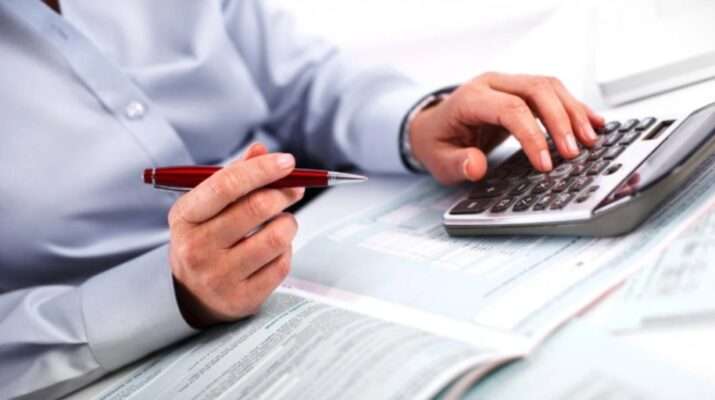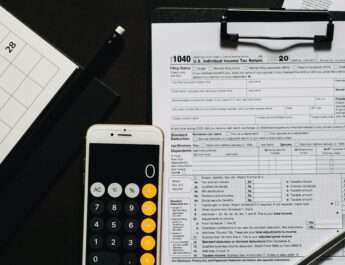Atteeq ur Rahman
For many people, figuring out the complexities of single trader tax filings may be a difficult undertaking in the complex world of taxes. Don’t worry, in this clarifying discussion, we’ll take a look behind the mysterious curtain that covers single proprietor tax filings. As we clarify the complex landscape of sole trader tax returns requirements, we will dig into sophisticated tactics and insights with a view towards optimising financial efficiency and guaranteeing regulatory compliance.
1. Solving the Sole Trader Puzzle
We should first clarify the basic idea of a solitary trader before diving into the depths of optimisation tactics. To put it simply, a lone trader is a person who operates as a self-employed company without the formalities of partnership or incorporation. This solo entrepreneurial operation involves a distinct set of tax issues, in which the individual bears personal accountability for any debts made by the company.
Tax Returns: Deciphering the Intricacy
Tax returns are the gold standard of financial responsibility for independent contractors. These yearly reports act as a means of exposing the company’s financial situation to regulatory bodies’ scrutinising gaze. However, even the most smart of businesses are often baffled by the complexities surrounding the preparation and filing of tax returns.
A prudent strategy that is aware of both legal obligations and optimisation potential is necessary to navigate the maze-like passageways of tax law. The many aspects of tax returns, ranging from income reporting to deductions and allowances, need a careful review to guarantee efficiency and correctness.
2. Financial Efficiency Optimisation Techniques
Sole traders are compelled to investigate ways to maximise tax return optimisation in order to maintain financial prudence. This allows them to maximise fiscal efficiency and minimise the tax burden. By using smart planning and wise choices, sole proprietors may take advantage of a variety of ways to reduce their tax obligations and improve their overall financial health.
Making the Most of Allowances and Deductions
The wise use of tax law’s deductions and allowances is essential to the optimisation of single proprietor tax returns. The strategic distribution of deductible costs, ranging from capital allowances to company expenses, is a powerful instrument for lowering taxable income and lessening the financial strain on single proprietors.
Using Tax Credits and Other Incentive Programmes
Apart from tax deductions and allowances, sole proprietors are provided with an array of tax credits and incentives that are intended to promote economic expansion and encourage entrepreneurial endeavours. The clever use of existing tax deductions, such as employment incentives and research and development credits, may give sole trader tax returns a renewed feeling of financial buoyancy.
Accepting Automation and Technology
In this technologically advanced day, sole proprietors have access to an abundance of digital tools and software programmes designed to make tax compliance easier. Sole entrepreneurs may reduce the administrative load of filing tax returns and free up time and resources for strategic business initiatives by using automation and digital integration.
3. Guaranteeing Adherence to Regulations
In the process of pursuing financial optimisation, sole proprietors need to be very careful to follow legal requirements and regulatory directives. Financial fines and legal repercussions are only two of the many negative effects that may arise from breaking tax laws. As a result, it is critical for sole proprietors to foster a culture of compliance, in which following legal requirements forms the cornerstone of sound financial management.
Using Professional Experience
For solo proprietors, the advice of an experienced tax specialist may be a priceless resource in the complex world of taxes. A professional tax advisor’s knowledge can help you make sense of complicated regulatory frameworks and maximise your tax strategies while also showing you the way to regulatory compliance and financial responsibility.
Constant Awareness and Education
Taxation is a dynamic field that is always changing due to constant changes in laws and regulations. Given this ever-changing environment, sole proprietors need to be especially watchful in their quest for tax literacy and keep up-to-date on the most recent advancements and patterns influencing the financial scene. Sole traders may strengthen their defences against the ups and downs of regulatory change by making a firm commitment to knowledge development and awareness.
4. Accepting Technological Paradigms: The Intersection of Compliance and Efficiency
The tax system is on the cusp of a digital revolution in an age defined by widespread technology use. Automation and innovation will soon combine to bring about a new era of efficiency and compliance. The contemporary sole trader is equipped with a multitude of technical tools designed to optimise regulatory compliance and streamline administrative procedures, ranging from artificial intelligence-powered tax compliance platforms to cloud-based accounting software. Therefore, even in the face of technological innovation’s attractiveness, the astute single trader has to be aware of the dangers and security flaws present in digital ecosystems and strike a careful balance between data integrity and efficiency in the sake of financial stewardship.
Conclusion:
In conclusion, there are a lot of possibilities and obstacles when it comes to the combination of financial efficiency and regulatory compliance in the complex world of sole trader tax returns. Sole traders may steer towards financial success and legal resilience by strategically optimising their operations and adhering to regulatory demands with caution. Sole traders may navigate their way towards financial empowerment and business success by adopting the principles of financial prudence and tax literacy. This will help them to understand the intricate and confusing world of tax returns.



